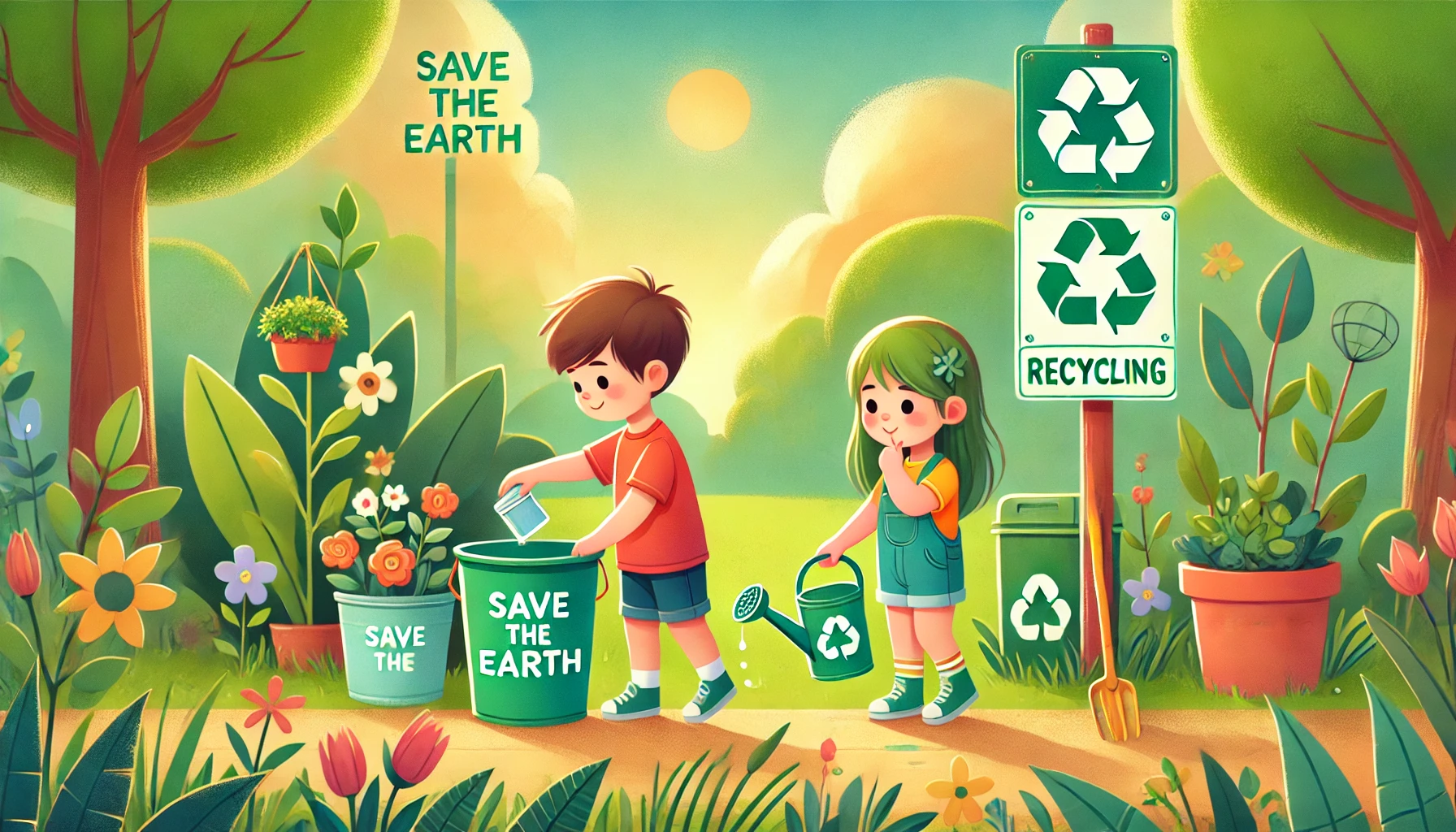How to Teach Young Children About Respecting Nature and Taking Care of the Environment
Teaching children to care for the environment at an early age helps them develop empathy, responsibility, and an appreciation for the world around them. Simple activities, playful learning, and everyday habits can build a lifelong respect for nature. When kids understand their role in protecting the planet, they feel empowered to make a positive difference.
Why Environmental Awareness Matters for Kids
- Encourages empathy and responsibility
- Teaches respect for living things
- Supports physical health through outdoor play
- Builds habits of conservation and care
- Connects children to their community and world
1. Explain Nature’s Role in Simple Terms
Help kids see how nature helps us every day.
Activity Idea:
- Say: “Trees give us air to breathe, and bees help flowers grow!”
- Go on a nature walk and point out things that help the earth, like plants, animals, and water.
- Ask: “What do you love most about nature?”
What Kids Learn:
- How nature supports life.
- That humans and nature are connected.
- Curiosity about the natural world.
2. Spend Time Outside Regularly
Connection builds care.
Activity Idea:
- Visit a park, garden, or beach.
- Let your child explore: touch leaves, listen to birds, collect rocks.
- Use simple prompts: “What colors do you see in the sky today?”
What Kids Learn:
- Joy and appreciation for the outdoors.
- How to observe and respect natural spaces.
- That nature is full of beauty and wonder.
3. Teach Simple Ways to Care for the Earth
Small habits make a big impact.
Activity Idea:
- Practice recycling together with labeled bins.
- Teach: “Turn off the lights when you leave the room to save energy.”
- Water plants or start a small garden at home.
What Kids Learn:
- Practical ways to protect the planet.
- The importance of daily habits.
- That their actions make a difference.
4. Read Books About Nature and the Environment
Stories inspire care and responsibility.
Activity Idea:
- Read books like The Earth Book by Todd Parr or Compost Stew by Mary McKenna Siddals.
- Discuss: “What did the characters do to help the earth?”
- Create your own nature story together.
What Kids Learn:
- That everyone can help the environment.
- New ideas for earth-friendly actions.
- Emotional connection to caring for the planet.
5. Model Respect for Nature
Show your child how to care for the environment by example.
Activity Idea:
- Pick up litter at the park together.
- Plant flowers or a tree in your yard.
- Avoid waste: use reusable bags and bottles when shopping.
What Kids Learn:
- That caring for nature is part of everyday life.
- How to lead by example.
- That responsibility feels good.
6. Make Eco-Friendly Crafts and Projects
Creativity builds connection.
Activity Idea:
- Use recycled materials to make art projects.
- Build a bird feeder from a milk carton.
- Create nature-themed crafts like leaf prints or rock painting.
What Kids Learn:
- That recycling can be fun and creative.
- How to see value in reused materials.
- Connection between creativity and caring for the earth.
7. Celebrate Earth-Friendly Choices
Positive reinforcement builds habits.
Activity Idea:
- Create an “Earth Helper” chart at home.
- Praise choices like turning off water while brushing teeth.
- Reflect daily: “What did we do today to help the earth?”
What Kids Learn:
- That their actions matter.
- Motivation to keep practicing eco-friendly habits.
- Pride in helping the planet.
8. Encourage Kindness to Animals and Plants
Respect extends to all living things.
Activity Idea:
- Watch birds or insects and talk about their role in nature.
- Teach gentle touch with pets and plants.
- Read stories about animal habitats and care.
What Kids Learn:
- Empathy for living creatures.
- How to treat nature with care.
- Curiosity about the world around them.
Final Thoughts
Teaching young children to respect nature and care for the environment builds a foundation of empathy, responsibility, and love for the world they live in. Through simple actions, playful exploration, and family traditions, children can learn that every small act matters. And as they grow, they’ll carry these lessons with them—helping to create a brighter, greener future for all.
